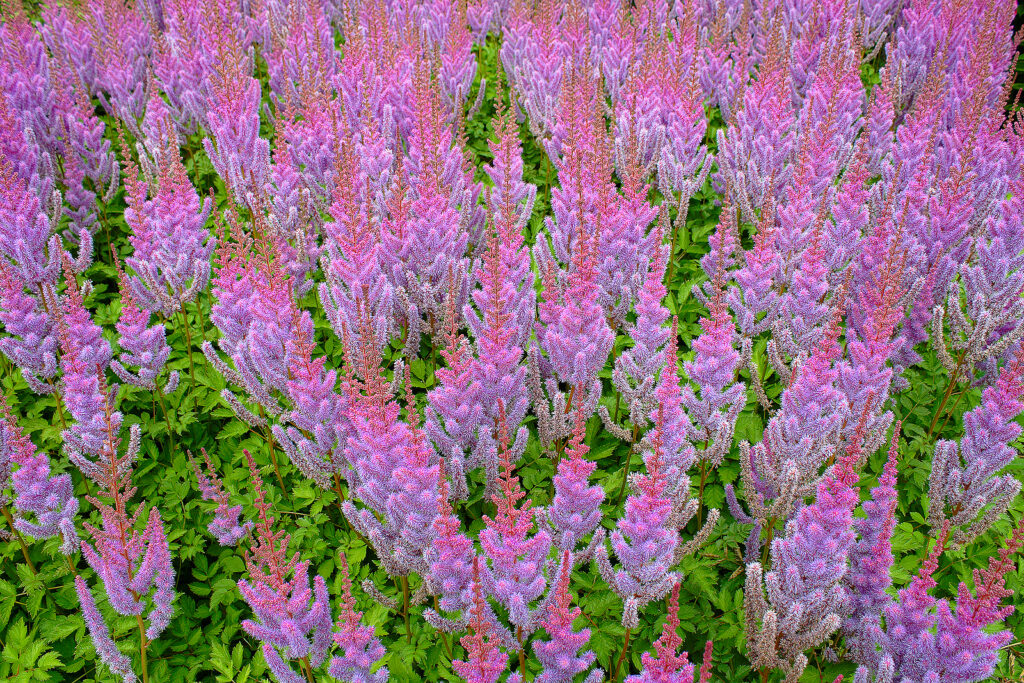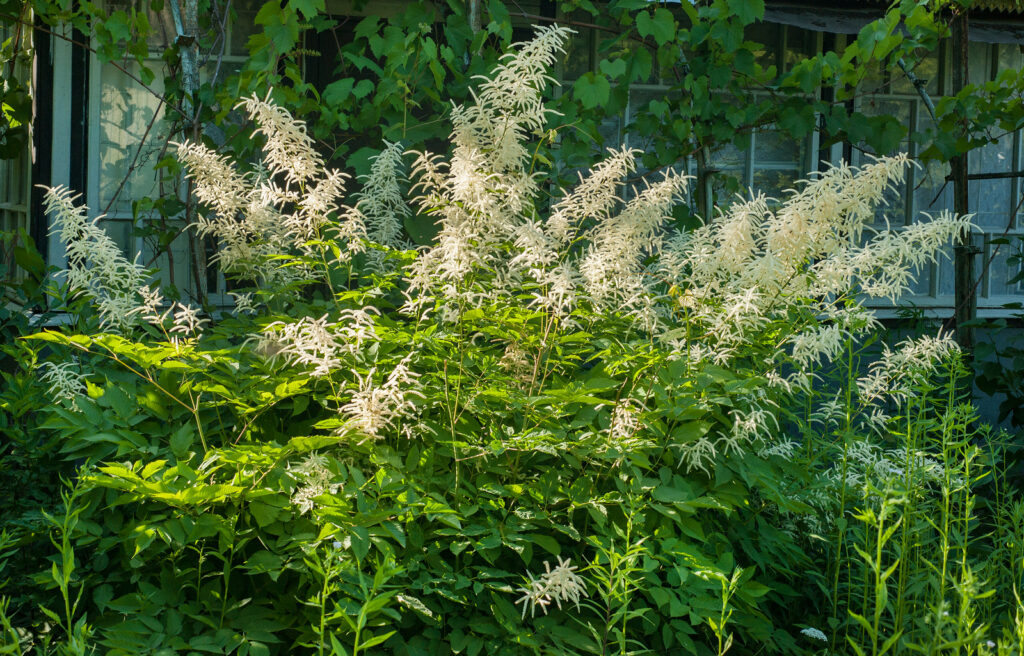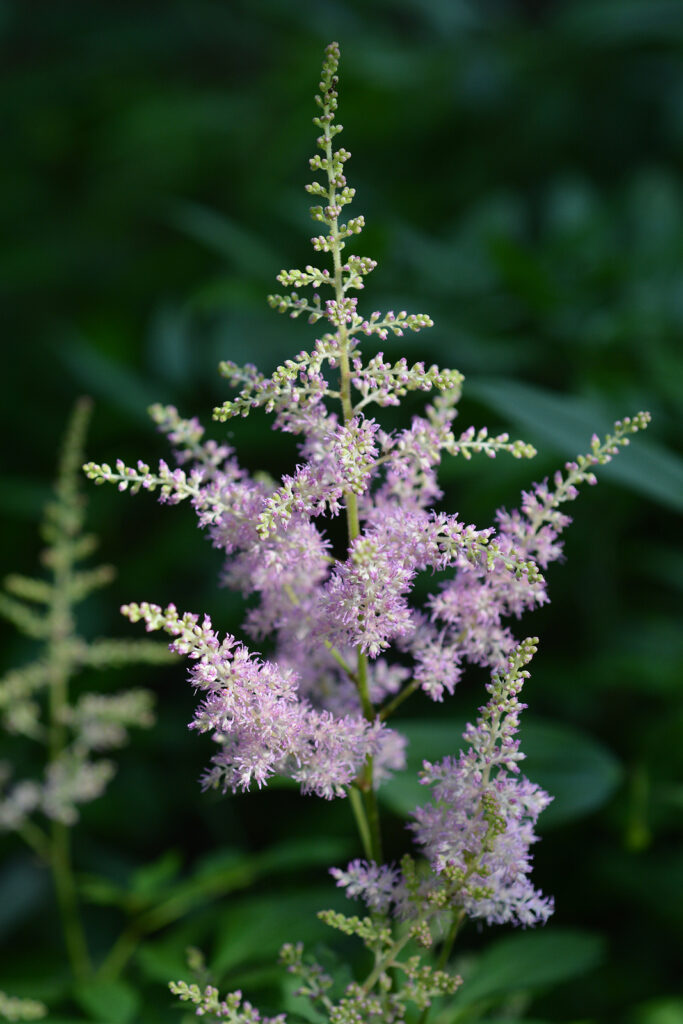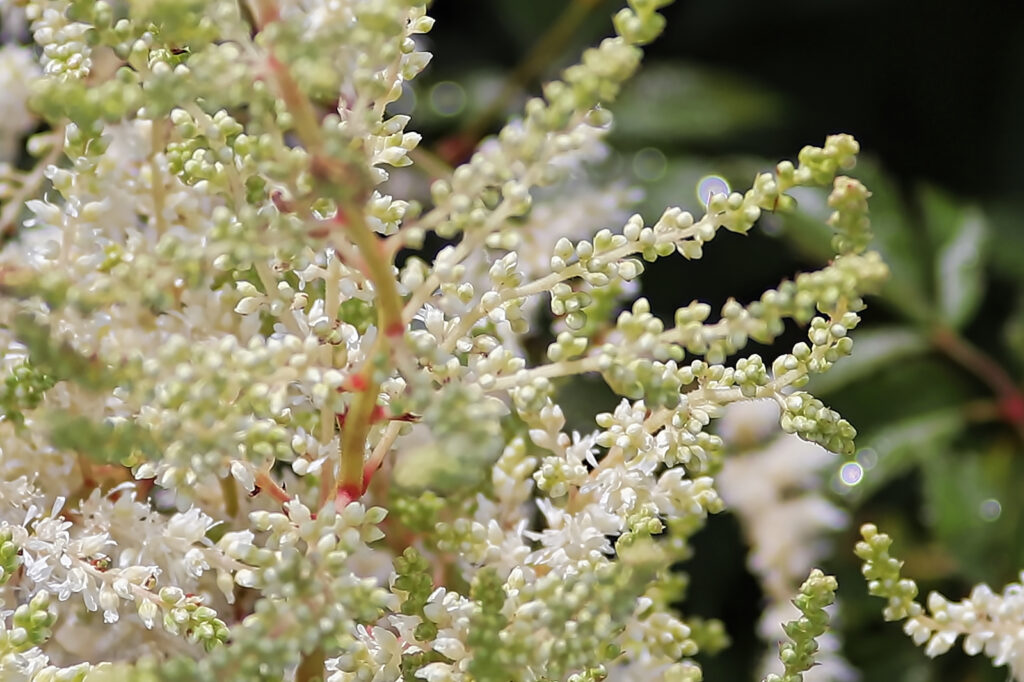Astilbe features plumy spikes of brilliant colors in mid to late summer. With its fern-like leaves, astilbe is a good choice for shady borders and under trees in cottage gardens. Astilbes cultivars range in size from 1½ to 6 feet tall.
Astilbe is a perennial member of the Saxifrage family.
Astilbe’s feathery trusses of tiny flowers can be whitish, pink, or red.
Astilbe is easy to grow in either a sunny or partly shady location. It does best in rich soil if supplied with plenty of water. It can be grown in the open border.
Astilbe is propagated by seed or division. From seed, it requires 10 weeks to 4 months to come into flower

Get to know Astilbe
- Plant type: Hardy perennial
- Growing Zones and range: Zones 3 to 9; grows best in Zones 4-8.
- Hardiness: Hardy to -25°F (-32°C); does not do well in hot weather
- Height and width: 12 to 48 inches (30-122cm) tall; 12 to 36 inches (30-91cm) wide.
- Foliage: Neat leafy clumps with compound toothed, almost fern-like leaves with upright plumed-flower clusters
- Flower form: Plume-like panicles 7 to 18 inches (18-45cm) inches
- Flower colors: Rich red, pink, lilac, salmon, cream, and white
- Bloom time: Spring to early summer
- Uses: Shady borders, near streams or ponds; a place for a dramatic accent.
- Common name: Astilbe, false spirea
- Botanical name: Astilbe spp.
- Family: Saxifragaceae
- Origin: Eastern Asia and North America
Where to plant Astilbe
- Astilbe grows well in partial shade. Astilbe needs shade in warm southern regions and less shade in northern regions.
- Grow astilbe in deep, humus-rich, well-drained soil.
- Astilbe prefers a soil pH of 6.5 to 7.
Astilbe uses and companions
- Plant Astilbe in groups in formal and informal gardens.
- Plant Astilbe for late color in shaded borders and naturalistic settings.
- Grow Astilbe along a stream or pond or in a woodland garden.
- good companions for Astilbe include Bergenia, Chelone, Clematis, Delphinium, Hosta, Japanese and Siberian Iris, Trollius.

When to plant Astilbe
- Set established plants in the garden in spring or fall. Add plenty of aged compost to the planting bed.
- Start seed indoors in spring or summer; seeds germinate in 6 to 8 weeks.
- Sow seed outdoors in shaded beds in summer.
- Transplant seedlings when they are about 4 inches (10cm ) tall.
- Set plants outdoors after the danger of frost passes in spring.
- Plants usually bloom during their second year.
Planting and spacing Astilbe
- Plant astilbe in humus-rich soil.
- Start seed indoors in flats or a six-pack with sterile potting soil. Cover the seed with 1/8 inch of fine soil.
- Seeds germinate in 6 to 8 weeks at 65°F (18°C).
- Thin or transplant seedlings when they are 4 inches (10cm) tall.
- Set astilbe plants in the garden 12 to 36 inches (30-91cm) apart.
- Potted plants may be set outdoors from spring to fall.

How to water and feed Astilbe
- Keep the soil evenly moist for astilbes. Make sure the soil is well-drained. Leaves will scorch and brown if the soil dries out.
- Fertilizer astilbes every four weeks with an all-purpose fertilizer.
Astilbe care
- Mulch around plants to conserve soil moisture.
- Divide astilbe every 3 to 4 years in spring or fall.
- Remove flower stalks when they turn brown after blooming to keep plants from self-sowing.
- Astilbe is susceptible to crown rot in wet soil, especially in winter
- Protect astilbe in winter by mulching around the crown of the plant with chopped leaves. Remove the mulch in early spring when growth begins.
Astilbe pests and diseases
- Japanese beetles and spider mites may attack Astilbe.
- Spider mites may be a problem in warm areas; spray with insecticidal soap.
- Control root rot with good drainage and air circulation.

Astilbe propagation
- Astilbe seed will germinate in 20 to 25 days at 55°-72°F (13°-22°C).
- Blooms ripen into rich russet seedheads from which seed can be harvested for planting the next season.
- Plants can be divided every couple of years in spring or fall
- Divide crowded clumps every 3 to 4 years and replant in enriched soil. Dig deeply being careful not to disturb the roots. Use a sharp knife to cut through woody roots.
- Replant divisions immediately.
Astilbe varieties to grow
- Astilbe x arendisii. This is a popular species from which many cultivars have come. Plants range from 24 to 48 inches (61-122cm) tall. Panicles of long narrow flowers rise 12 to 20 inches (30-50cm). Cultivars include ‘Avalanche’ (white flowers), ‘Europa’ (pink flowers), ‘Ostrich Plume’ (salmon pink flowers), ‘Peach Blossom’ (light rose).
- A chinensis. This species is available in a range of pastel colors.
- A. chinensis pumila. Less than 12 inches (30cm) tall; plumes are rounded and less feathery than others.
- A. taqueti. Upright species to 48 inches (122cm) tall; ‘Superba’ is a strong pink cultivar.
Astilbe frequently asked questions
Q: What are the best-growing conditions for astilbe?
A: Astilbes do well in full sun but are best with partial shade, especially in the southern parts of the country. Soil should be just moist with plenty of organic matter mixed in.
Q: How do I propagate astilbe?
A: Division. Divide clumps every third year.
Q: What’s a good way to use astilbe in the garden?
A: Larger astilbe varieties work well in a garden border as a specimen, but most varieties should be set out in groups of three or more. Heights vary from 12 to 40 inches
Q: Can I grow astilbe in winter?
A: Yes. You can force astilbe for winter flowering by potting them in the fall, rooting them, and bringing them into greenhouse heat with plenty of water.



